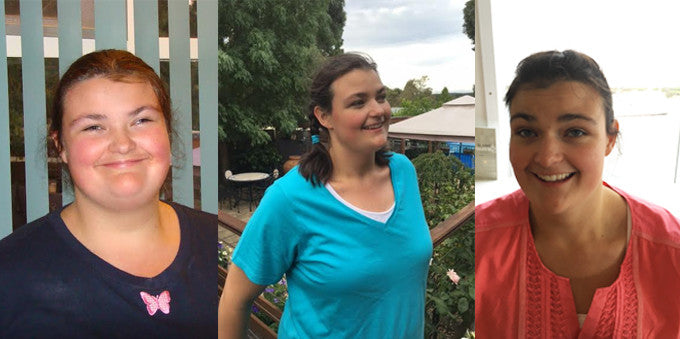Karen Hunt is one of many women with ADHD struggling with pervasive symptoms and little support. The 57-year-old shares her experience in a world that's sorely lacking education and understanding around the common neurodivergent condition. Plus, we’ll be unpacking the reasons behind the great diagnoses gap between males and females.
It wasn’t until this year that the mum of 2 realised she had ADHD – despite having lived with symptoms for decades, Karen had put them down to other causes. And it’s no surprise when considering the lack of education around ADHD in women and girls – and to a lesser extent, in general – many are left to fall beneath the cracks of the medical system. While some will receive their diagnosis late, others may never receive theirs. The consequences for poor ADHD awareness are dire – Karen’s one of countless people who have gone through life without the much-needed support and assistance for her condition, often blaming herself for her symptoms.
“I’ve always been on the lookout of ways to improve my life and performance. Never good enough. That sense of failure is huge. For the second time in my life, I’d felt burnt out,” Karen says. “There is no awareness of ADHD. I undertook Mental Health first aid training at work and this was not covered.”

Affecting 1 in 20 Aussies, ADHD is prevalent around the country – and the world – and despite popular misconception, it’s not just kids who are affected. More than 75% of kids diagnosed with the condition will continue experiencing symptoms into adulthood, and for many women, like Karen, they won’t even receive a diagnosis in childhood due to the lack of education and understanding of the condition, especially pertaining to girls and women.
“I’m yet to get a confirmed diagnosis, I read an article in July 2022 in Prevention Magazine from September,” Karen says of an ADHD article she came across before knowing the cause of her long-held symptoms. “Just prior to reading this article, I had advised my husband that I was going to quit my job which I had been doing for nearly 12 years. I was broken.”

Karen’s not the only one to have had struggled on the path to unveiling their ADHD condition. It estimated that there are between 50 and 75% of undiagnosed ADHD cases among women and girls. One study shows that girls with ADHD are being diagnosed and referred to specialists at far lower rates than boys. One of the main reasons for this diagnoses gap comes down to the presentation of ADHD – it’s categorised by the two groups of symptoms, and people may exhibit mostly one group or a combination of them:
Hyperactive and impulsive: Hyperactivity is believed to be more common in kids – it’s also the group that is most commonly associated with ADHD. The symptoms in this group include restlessness, fidgeting and disrupting others. Impulsive symptoms can include interrupting and talking over others, along with taking others’ things without permission.
Inattentive: These symptoms include difficulty focusing on things and seeing tasks through to their end point, along with avoiding tasks that require prolonged attention. Forgetfulness and difficulty managing time are also common symptoms.

While boys more frequently present with hyperactive and impulsive symptoms like fidgeting, restlessness and mood swings, girls often have more inattentive symptoms like concentration and time management issues.
Karen fell into the latter category, with her symptoms greatly affecting her schooling.
“Education wise, I’m a very slow reader so studying took a really long time. I would spend 15-20 hours a week outside of school (in the later years) studying. I could never summarise and it seems I’m a visual learner,” the accountant says.
Karen knows well the lack of education and support around women and girls with ADHD – her inattentive symptoms were not met with support.
“Up to this stage I was aware of menopause symptoms and thought that was adding to the inadequacy I was feeling. It was, as I’ve read that menopause makes our traits worse,” she said. “In August I went to my GP for a referral to Jean Hailes Foundation for assistance as I’ve had 2 women’s cancers in my 40s.
“Then I remembered that Prevention article, reread and investigated. It was me. I had never heard of inattentive ADHD characteristics.”
But this lack of ADHD education and diagnoses for girls and women doesn’t just come down to symptom presentation, it also comes down to our society’s problem with gender bias. For instance, some presentations of ADHD like shyness are often misinterpreted as a personality trait rather than being taken into consideration with other ADHD symptoms.

Many quieter behaviours – the kinds of which are more common in girls – are seen as ideal behaviours and thus not investigated, leaving girls and women with ADHD to go unnoticed. Other inattentive symptoms that are less idealised by educational, parental and medical figures in the child’s life, like poor focus and impulsive behaviours, are yet again treated as behaviours to be met with discipline, only serving to further isolate girls with the neurodivergent condition.
One major consequence of a late – or non-existent – ADHD diagnosis is the development of mental health comorbidities like anxiety and depression that result from a lack of support, treatment and therapy. Karen knows this well.
“When my eldest was 2 I was diagnosed with depression, but I now think this was an escalation of my ADHD traits,” she says.
We are starting to see some gradual change in recent years, with rising numbers of women finally getting their ADHD diagnoses after decades of being left behind. Research is also showing women’s prescriptions for ADHD medication more than double in recent years, indicating a turn in the tides, but it’s still moving at a pace slow enough that women and girls are still waiting on their diagnosis despite their own awareness of their condition. In fact, it is the women themselves who are forced to advocate for their health and put forth their case to medical professionals to finally get a diagnosis after years of symptoms and no support – and despite this, many still face pushback from medical professionals. Karen is one of many women still waiting to receive her diagnosis.
“The psychiatrist I’m waiting to see only comes to Regional Victoria one day a week. So, I would say there’s no Education and virtually no assistance and support.”
Having lived undiagnosed and going many years without understanding the cause of her symptoms, Karen shares the suffering that has resulted.
“My ADHD has been that I’ve not had support that I didn’t know I needed and it would have made my life “better”. There’s a reason for my perceived failures.”
That’s one of the reasons why early diagnosis is so important – most children with ADHD will become adults with ADHD, compounded by the development of comorbidities, more responsibilities and no treatment. Symptoms can be attributed to the wrong conditions and patients tend to place blame on themselves when they don’t know about their neurodivergent condition. Karen has a few tips to help the countless others out there living with ADHD symptoms.
“For others I would say educate yourself and make sure you see someone who’s well versed in ADHD as there’s a strong possibility you will get diagnosed with depression or anxiety. These can exist with ADHD but isolated treatment will not be the magic answer.”
If you or someone you know is in need of help, don’t hesitate to reach out to mental health support lines:
Lifeline: 13 11 14
Kids Help Line: 1800 551 800
ADHD Centre: 02 9889 5977
Beyond Blue: 1300 22 4636






Lisa
July 07, 2023
Thank you for sharing! I have only just realised myself that all of the issues I have had in the past with anxiety or depression, seem to all lead to ADHD traits. Especially feeling like a total failute when you can’t follow through how other people do, when you know you are more than capable but mentally you just can’t push through certain traits you have. Life changes such as children and perimenopause seem to have really upped the anti on the issues too!